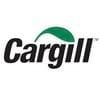Disinfection of Swine Barns
Published: January 1, 2002
Source : Dr. Marvin McCallister - Extension Veterinarian, Manitoba Agriculture and Food
A number of important criteria must be considered when selecting an appropriate
and effective disinfectant. Disinfectants should:
- Be free of strong and objectionable odors
- Not be corrosive
- Not remain strongly toxic after their application nor excessively irritating
- Be effective at ordinary temperatures when diluted with water, and readily
mix with water
- Be packaged in such a form and concentration that they are easy to transport,
mix and economical to use
- Have a high fast-acting antimicrobial potency even in heavily contaminated areas.
A single disinfectant rarely fulfills all of these criteria and the choice
of disinfectant must be based upon the inter-relationship of factors such as
type of surfaces to be cleaned, mechanical or scrubbing action occurring, and
a knowledge of the micro- organisms that are causing a risk of disease.
The following is a brief description of several of the more widely used disinfectants.
The effectiveness of all of the disinfectants discussed here is greatly improved
by a thorough pre-cleaning of all surfaces with a high pressure sprayer with
a good detergent.
In order to appropriately discuss the subject of disinfection, a brief definition
of terms is necessary. Sterilization is the use of a physical or chemical procedure
to destroy all forms of microbial life. Disinfection is generally a less lethal
process in that bacterial endospores are often not inactivated without very
long exposure to highly concentrated disinfectant chemicals. An antiseptic is
defined as a germicide that is used on living tissue for the purpose of inhibiting
or destroying micro- organisms. Some germicides can be used both as disinfectants
and as antiseptics.
Formaldehyde can be used as a
fumigant to decontaminate all surfaces of a building, if that building can be
tightly sealed. It has a broad spectrum of activity and is highly effective,
however it must be used carefully due to the irritating fumes and potential
explosiveness. The facility must be completely depopulated. Paraformaldehyde,
a solid polymer, is heated on an electric pan to 204C, producing formaldehyde
gas. Use 5 gm per cubic meter of building. The electricity for the heating pan
needs to be controlled from outside the building and the building must be sealed
for 24 hours. Do not enter until it has been thoroughly ventilated. Formaldehyde
gas is one of the few agents effective against coccidiosis and cryptosporidiosis.
Other ways to produce the fumigant includes aerosolizing a 20% solution of formalin
at 10 litres per 1000 m3 of space or reacting potassium permanganate (620 gm)
with formalin (1240 ml) for each 100 m3 of space. The building should be at
about 20o C and all surfaces should be wet down immediately prior to fumigation
so the relative humidity is 80 - 90%, but do not leave pools of water which
will absorb the formaldehyde.
Chlorine (Bleach) is inexpensive
and widely used as a disinfectant. Hard water does not interfere with activity
but surfaces soiled with organic material consumes the chlorine rendering it
ineffective. It can be corrosive to some surfaces. Decomposition occurs rapidly
in warm temperatures. It should never be used in conjunction with formaldehyde
or other acids. Surfaces should be thoroughly cleaned of organic material before
using chlorine. A 1:10 dilution of household bleach (5.25% sodium hypochlorite)
is adequate for most disinfectant needs including being sporicidal.
Quaternary Ammonium Compounds:
Significant advances in the development of fourth and fifth generation chemicals
and combinations hereof, have broadened the spectrum of bio-cidal activity,
and increased their effectiveness in presence of organic material. They are
just as efficacious as other disinfectants for sanitation of non-porous hard
surfaces and a highly desirable feature is the cleaning ability of the detergent
like activity. While they have good bactericidal, viricidal and fungicidal activity,
they are not sporicidal. Residual chemical has little toxicity for animals.
Phenolic Disinfectants are widely
used. Cresol and chloriphenol are useful for disinfecting dirty surfaces because
they are not inactivated by organic matter. However, bacterial spores are resistant.
The phenolics are generally not compatible with detergents and often a combined
product would precipitate in hard water. Phenolics are highly toxic and leave
lingering odors.
Hydrogen Peroxide is considered
to be an oxidant disinfectant and would include others such as ozone, and potassium
permanganate. Hydrogen peroxide must undergo a complex chemical reaction, not
fully understood, forming highly reactive hydroxyl radicals which attack cell
membranes. Commercially available preparations of 3% hydrogen peroxide are relatively
stable and effective when used on inert surfaces, but contact must occur for
as long as 20 minutes to have anti-fungal activity. Indications are that concentrations
need to be in the 10-25% range, with a longer contact time to be sporicidal.
Hydrogen peroxide would be inappropriate for disinfection of large surface areas
which could not be submerged in the solution.
Virkon: This is a trade name
of a newer disinfectant/cleaner containing potassium monopersulfate as the active
ingredient. It has a wide spectrum of viricidal, bactericidal, and fungicidal
activity due to the strong oxidizing system of activity. The surfactant and
organic acid components enhance this affect. Virkon is sold as a powder and
needs to be mixed fresh prior to use. When used in a foot bath or for other
purposes, diluted Virkon remains stable for only two weeks. It is not corrosive,
and has a low toxicity. It can be applied manually, sprayed or fogged in a premises
occupied at the time. Contact of the powder to skin or eyes or inhalation of
the powder must be avoided. It has good detergent properties as well, however
a thorough pre-cleaning is still the best prior to fogging. Fogging equipment
is available from the manufacturer. Virkon is widely used in the UK to wash
down the sows prior to going to the farrowing crates. Normally, a 1% solution
is used and is prepared by mixing 10 gms of powder to 1 litre of water.
Alcohols need to be of a concentration
of 70% or greater. They evaporate rapidly resulting in very short contact times,
as well as lack the ability to penetrate residual organic material. Small tools
to be disinfected need to be pre-cleaned then totally submerged for 10 minutes.
Alcohols are often used as antiseptics on the skin prior to surgery.
Other: Chemicals such as chlorhexidine,
iodine, and iodophors are primarily used as antiseptics (used on skin to inhibit
organisms). Iodine compounds lack sporicidal activity.
The application of some of these disinfectants may mean the careful calibration
of high pressure washer equipment in order to achieve the desired concentration.
Addendum regarding internal helminth (worm)
parasites:
The major mode of transmission of worm parasites is via contamination of food
or the environment with infected feces. Eggs of ascarid worms for example, stick
to concrete surfaces and the usual disinfectants used on farms do not kill these
eggs. The best method of decontamination is a thorough cleaning with detergent
and steam.
The following is a summary of the steps to properly clean and disinfect a premises:
- All manure, litter, and unused feed should be removed.
- All surfaces should be thoroughly cleaned with a high pressure (preferably
steam) washer with a good detergent, including feeding utensils.
- All surfaces should be sprayed with a liberal amount of appropriate disinfectant.
- In some cases, it may be necessary to rinse the disinfectant off all surfaces.
- If the premises cannot be adequately disinfected by spraying, consideration
should be given to fumigation.
- Allow the facility to dry and remain vacant for several days before restocking
April 9th, 1998
Dr. Marvin McCallister
Extension Veterinarian
Veterinary Services Branch
Dr. Marvin McCallister
Extension Veterinarian
Veterinary Services Branch
Related topics:
Recommend
Comment
Share

Would you like to discuss another topic? Create a new post to engage with experts in the community.









